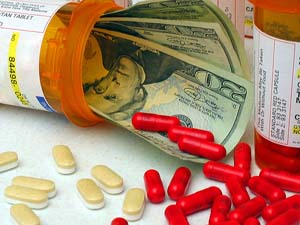Big Pharma Plays Hide-the-Ball With Data
By Ben Wolford
On the morning of March 2, 2005, a 14-year-old Japanese girl woke up scared. At first she thought someone was outside the house watching her, but then she decided the stranger must be inside. She wandered restlessly and, despite the cold weather, threw open all the windows. Later, over a meal, she declared, “The salad is poisoned.” Two days later, she said she wanted to kill herself.
 This teenager with no history of mental illness was diagnosed with delirium. The night before the hallucinations started, she began taking an anti-influenza drug called Tamiflu (generic name: oseltamivir), which governments around the world have spent billions stockpiling for the next major flu outbreak.
This teenager with no history of mental illness was diagnosed with delirium. The night before the hallucinations started, she began taking an anti-influenza drug called Tamiflu (generic name: oseltamivir), which governments around the world have spent billions stockpiling for the next major flu outbreak.
But evidence released earlier this year by Cochrane Collaboration, a London-based nonprofit, shows that a significant amount of negative data from the drug’s clinical trials were hidden from the public. The Food and Drug Administration (FDA) knew about it, but the medical community did not; the U.S. Centers for Disease Control and Prevention (CDC), which doesn’t have the same access to unpublished data as regulators, had recommended the drug without being able to see the full picture. When results from those unpublished trials finally did emerge, they cast doubt over whether Tamiflu is as effective as the manufacturer says.
The revelation of hidden data bolstered a growing movement against what’s referred to within the research community as “publication bias,” in which scientists squirrel away mostly negative or inconclusive findings and broadcast only their positive ones. Concealing trial data—for which patients accept the risks of untested treatments for the greater good—is routine. As many as half of all clinical trials are never published, PLOS Medicine reported last year.
That Japanese girl, whose case was detailed in an FDA report, did not kill herself. But at least 70 people have died, many of them by suicide, after Tamiflu-induced episodes.
